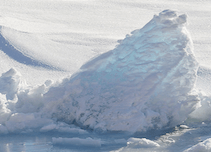 We’ve written a number of things about the contrast between native apps and web apps. The common consensus these days is that the two will eventually converge — but that has been happening more slowly than some have been hoping, particularly in the mobile space where native apps dominate. On the more traditional side of things, the transition is happening faster, but something Google has been working on could be the real missing link: Native Client. And according to Google, it’s getting close to being ready for primetime.
We’ve written a number of things about the contrast between native apps and web apps. The common consensus these days is that the two will eventually converge — but that has been happening more slowly than some have been hoping, particularly in the mobile space where native apps dominate. On the more traditional side of things, the transition is happening faster, but something Google has been working on could be the real missing link: Native Client. And according to Google, it’s getting close to being ready for primetime.
As a quick primer, Native Client allows developers to build web apps that execute native code inside the browser. This means that on top of traditional web-based languages like JavaScript, the browser will be able to execute things written in languages like C and C++. More importantly, it will make porting desktop apps to the web much easier.
And while the technology is fully open source, it’s clearly being driven by Google. They’ve not only worked the most on Native Client, but they’ve developed other tech such as the Pepper Plugin API (PPAPI) which is an evolution of the Netscape Plugin API (NPAPI), which pretty much all browsers use to handle browser plugins — well, all browsers beside Microsoft Internet Explorer which uses ActiveX. Pepper was made to address the portability and performance issues with NPAPI.
Anyway, in a post today on the Chromium blog, Google has announced that Native Client is “getting ready for takeoff“. Google has been working to get full Pepper support, and now they believe they’ve made Native Client “as portable and secure as JavaScript”. And thy’ve just unveiled a completely revamped SDK for the project.
Technically, this new SDK is called “Arctic Sea” and it requires Chrome 10 or above (which we just covered yesterday). Also worth noting, with the Pepper support (which is close to being “stable”), Native Client no longer supports NPAPI. You can read more about the new SDK here.
[photo: flickr/U.S. Geological Survey]
